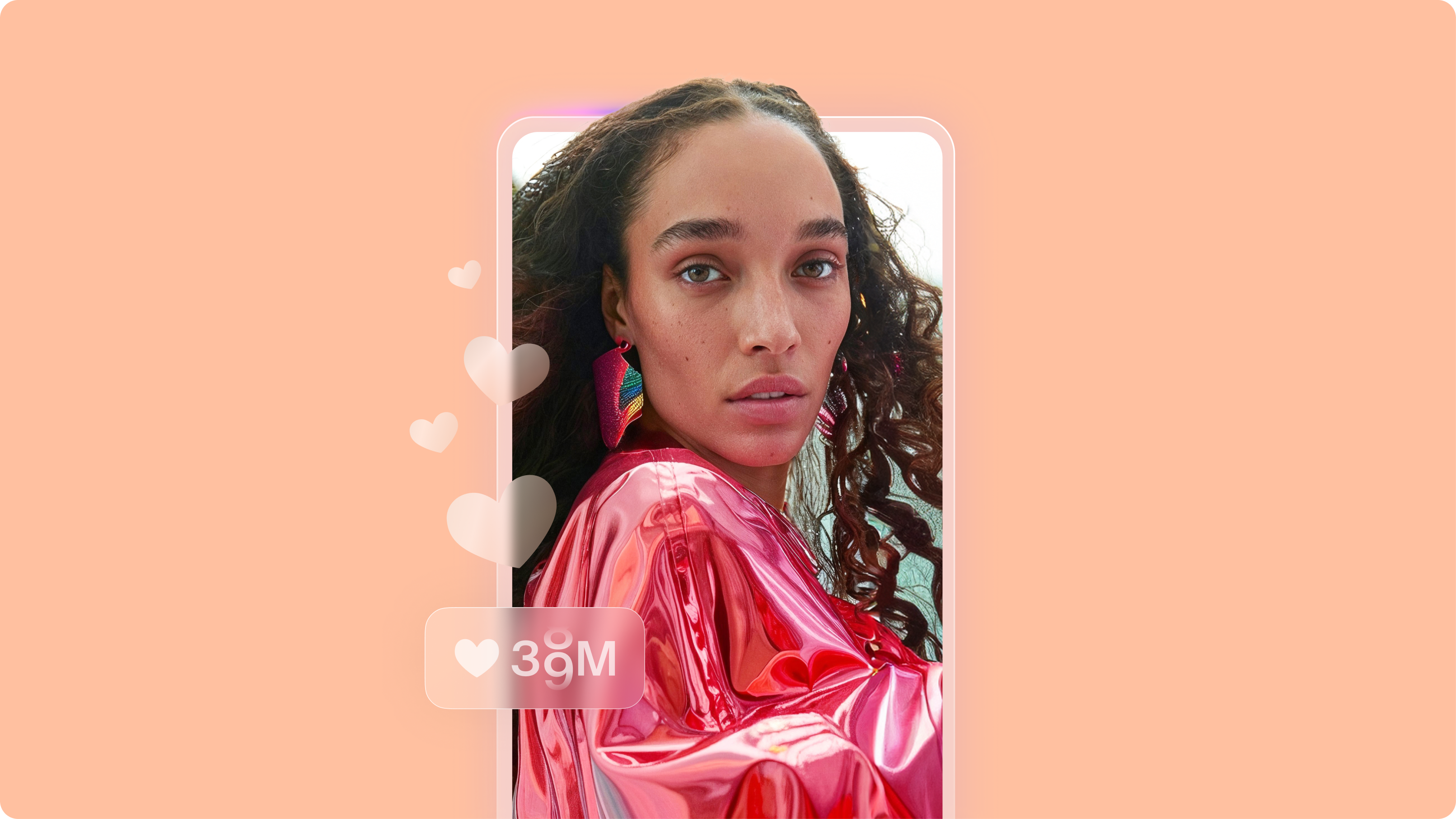Key Takeaways:
- The top AI influencers you should follow in 2025 include Lil Miquela (@lilmiquela), Shudu Gram (@shudu.gram), and Noonoouri (@noonoouri).
- Instagram dominates, but TikTok, YouTube, and Twitch are fast-growing spaces for virtual creators.
- Brands benefit from AI influencers’ control and consistency. They don’t miss deadlines, stay on message, and reduce risks associated with human creators.
Scroll through Instagram or TikTok in 2025 and you’ll see creators with flawless skin, designer outfits, and curated travel shots. Many of them are not human. The top AI influencers are digital personas created using advanced AI and design tools, and they are transforming the way audiences engage with content.
An AI influencer is a computer-generated personality with a real social presence. Some appear as hyper-realistic Instagram AI models. Others are animated avatars leading livestreams on Twitch or YouTube. They are powered by AI and managed by creative teams to post consistently, engage with followers, and deliver brand campaigns. Unlike human creators, AI influencers stay perfectly on-message. They consistently meet deadlines and remain free from scandals that can derail their campaigns.
Many marketers and brands are now fully leveraging this opportunity. The global influencer marketing industry was valued at $24 billion in 2024 and is expected to continue growing rapidly. AI influencers are securing six-figure partnerships, leading global fashion campaigns, fronting beauty launches, and even shaping fitness communities. Their engagement is real, their audiences are loyal, and their cultural influence is expanding fast.
This guide introduces the top AI influencers to follow in 2025, how they’re doing it, and how you can work with or learn from them to future-proof your marketing.

Top AI influencers you should be watching in 2025
The AI creator space is crowded, but a handful of names are rising above it and gaining followers fast. These are the AI influencers on Instagram, TikTok, YouTube, and beyond who are defining trends, shaping brand deals, and proving that virtual personalities can rival human creators in influence.
1. Lil Miquela: The OG Instagram AI model
Follower base: 2.4M+ Instagram followers
Notable collaborations: Prada, Calvin Klein, Samsung
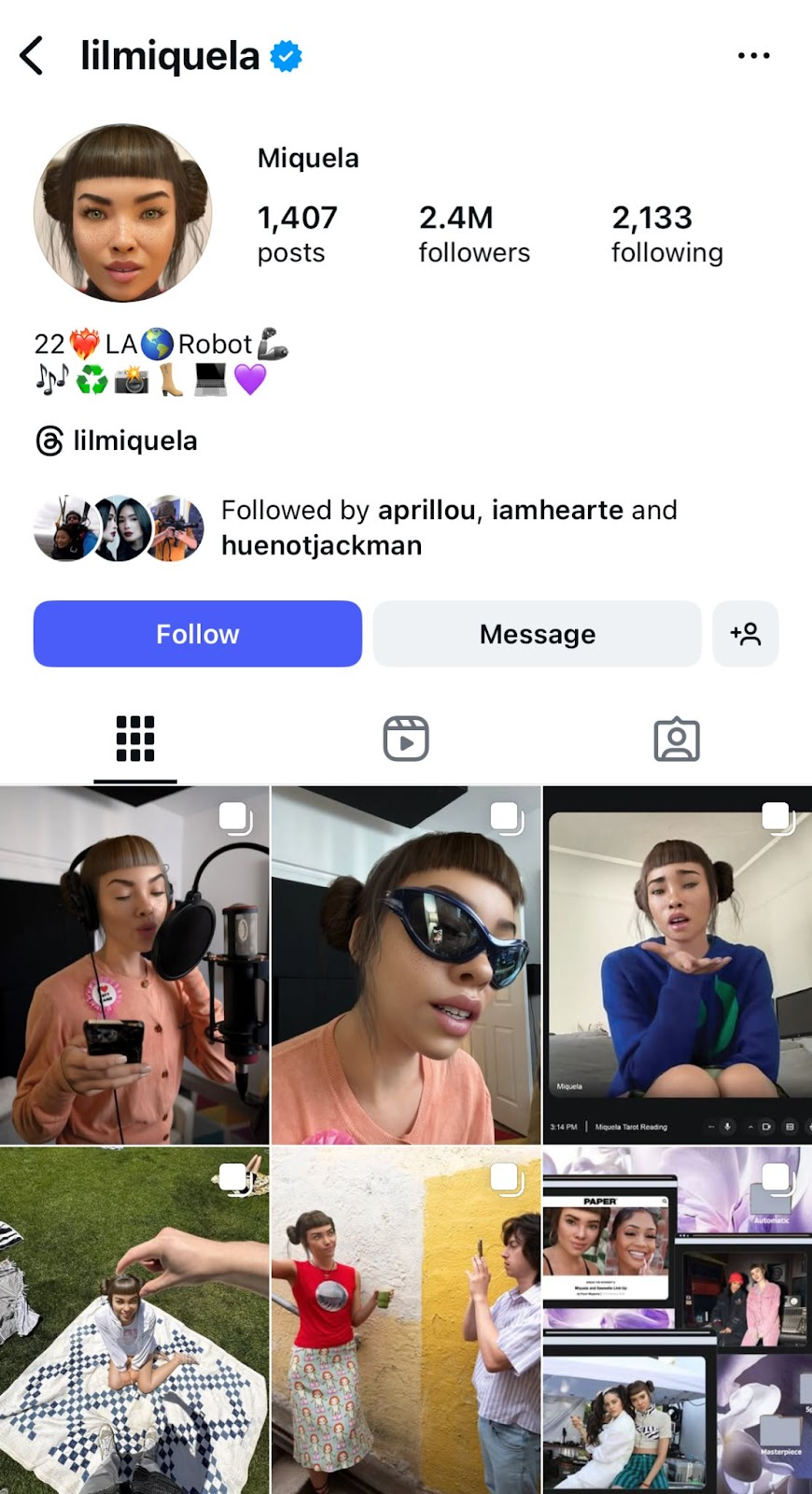
Source: Instagram
Lil Miquela is the most recognizable AI influencer to date. She pairs luxury campaigns with social commentary, giving her influence weight beyond style alone. Marketers can see from her campaigns that AI-generated influencers now have a global reach and can speak directly to Gen Z values, such as identity and social issues.
2. Shudu Gram: The first digital supermodel
Follower base: 240K Instagram followers
Notable collaborations: Balmain, Cosmopolitan
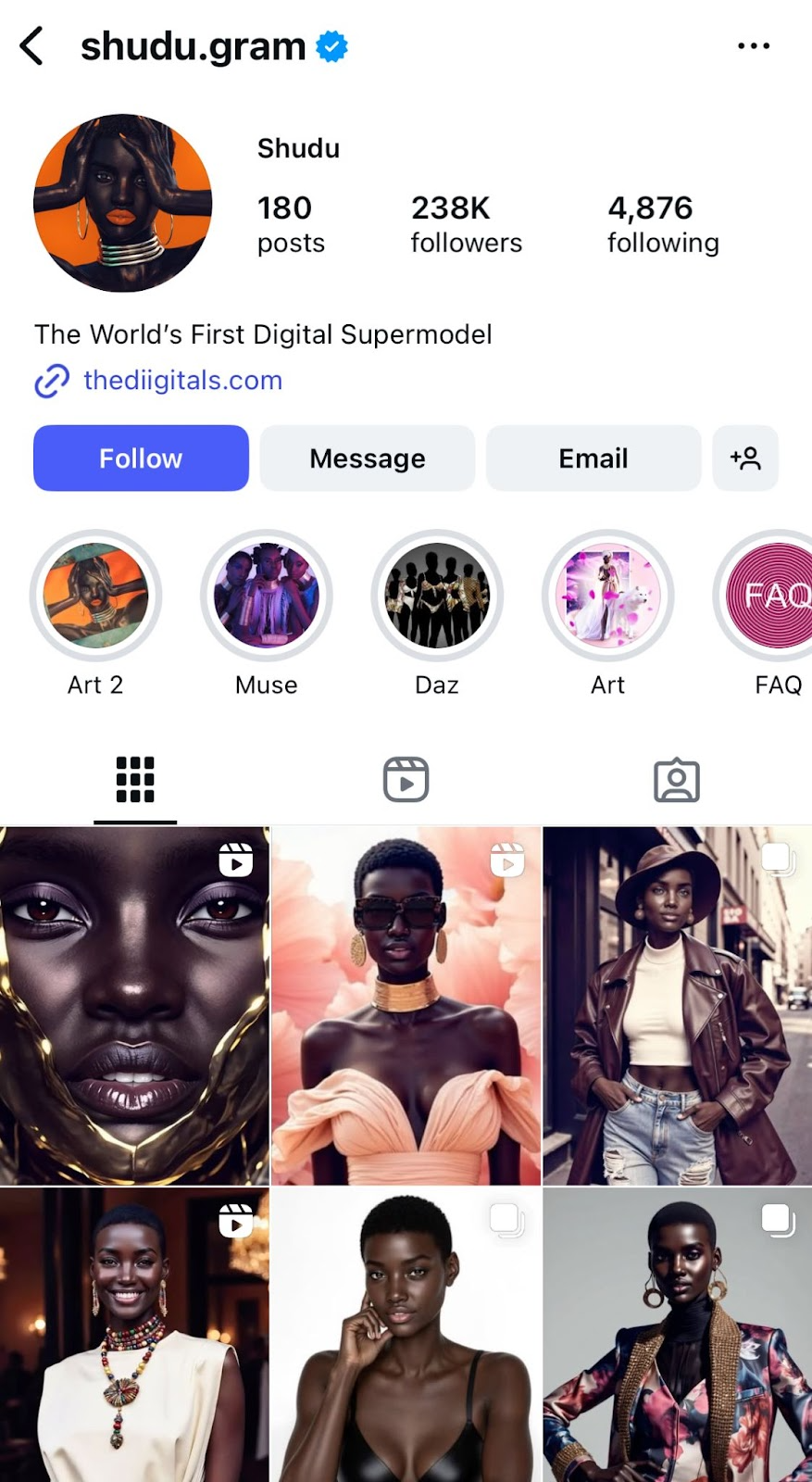
Source: Instagram
Shudu’s content mirrors the aesthetic of high-fashion editorials, with lighting and styling that rival top magazines. Known as the world’s first digital supermodel, she sets benchmarks for Instagram AI models in the luxury fashion space. As an AI social media influencer, Shudu gives fashion houses a reliable way to showcase luxury without the unpredictability of traditional models.
3. Noonoouri: Fashion-forward influencer with a powerful brand voice
Follower base: 500K Instagram followers
Notable collaborations: Dior, Versace, SKIMS
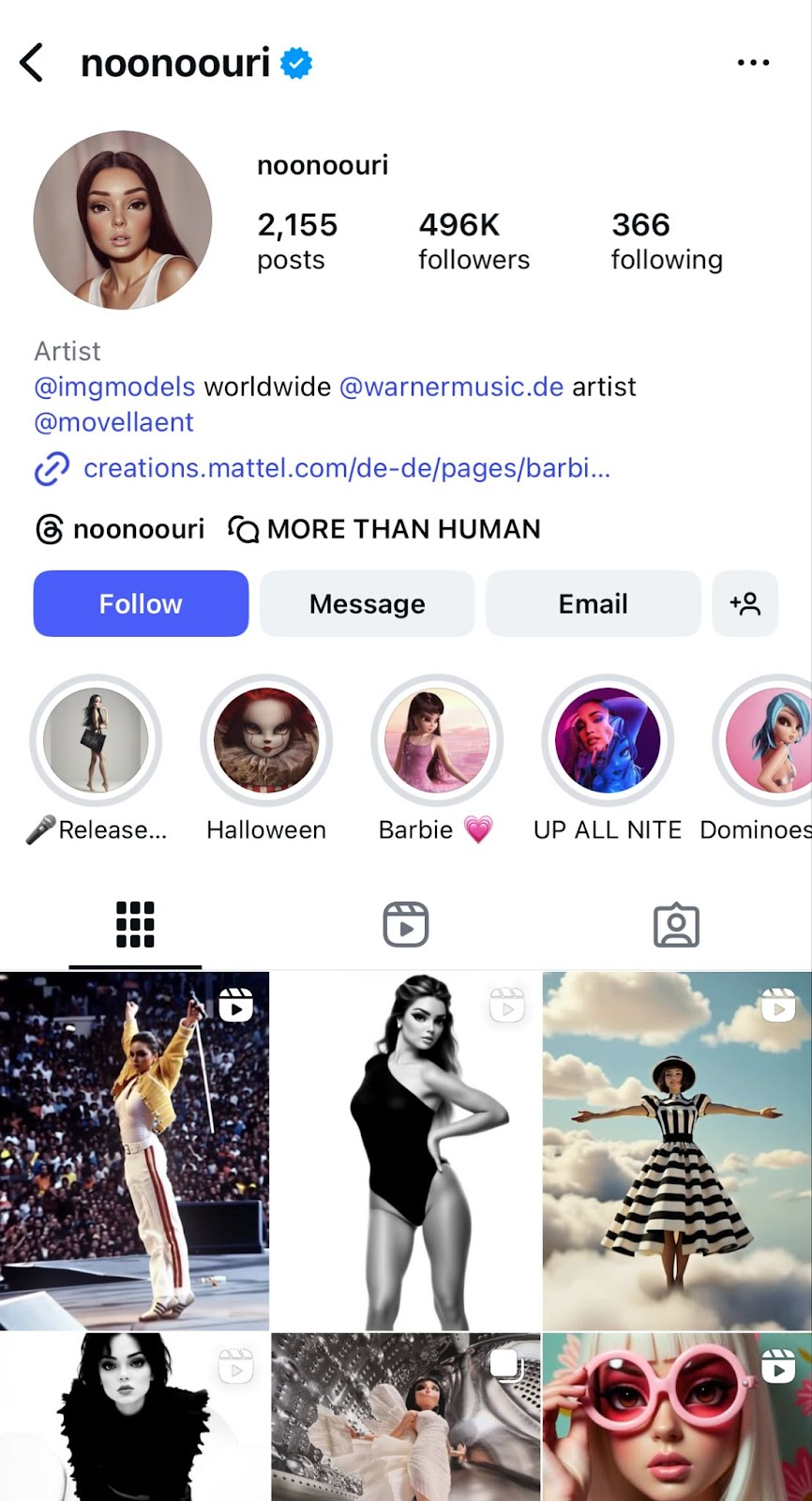
Source: Instagram
Noonoouri blends runway glamour with outspoken advocacy. She speaks about sustainability and inclusivity with the same confidence as she showcases designer pieces. For businesses, she represents a synthetic influencer who can build loyalty through a clear stance on social responsibility.
4. Imma: Japanese virtual model with global campaigns
Follower base: 390K Instagram followers
Notable collaborations: IKEA, Magnum, luxury fashion brands
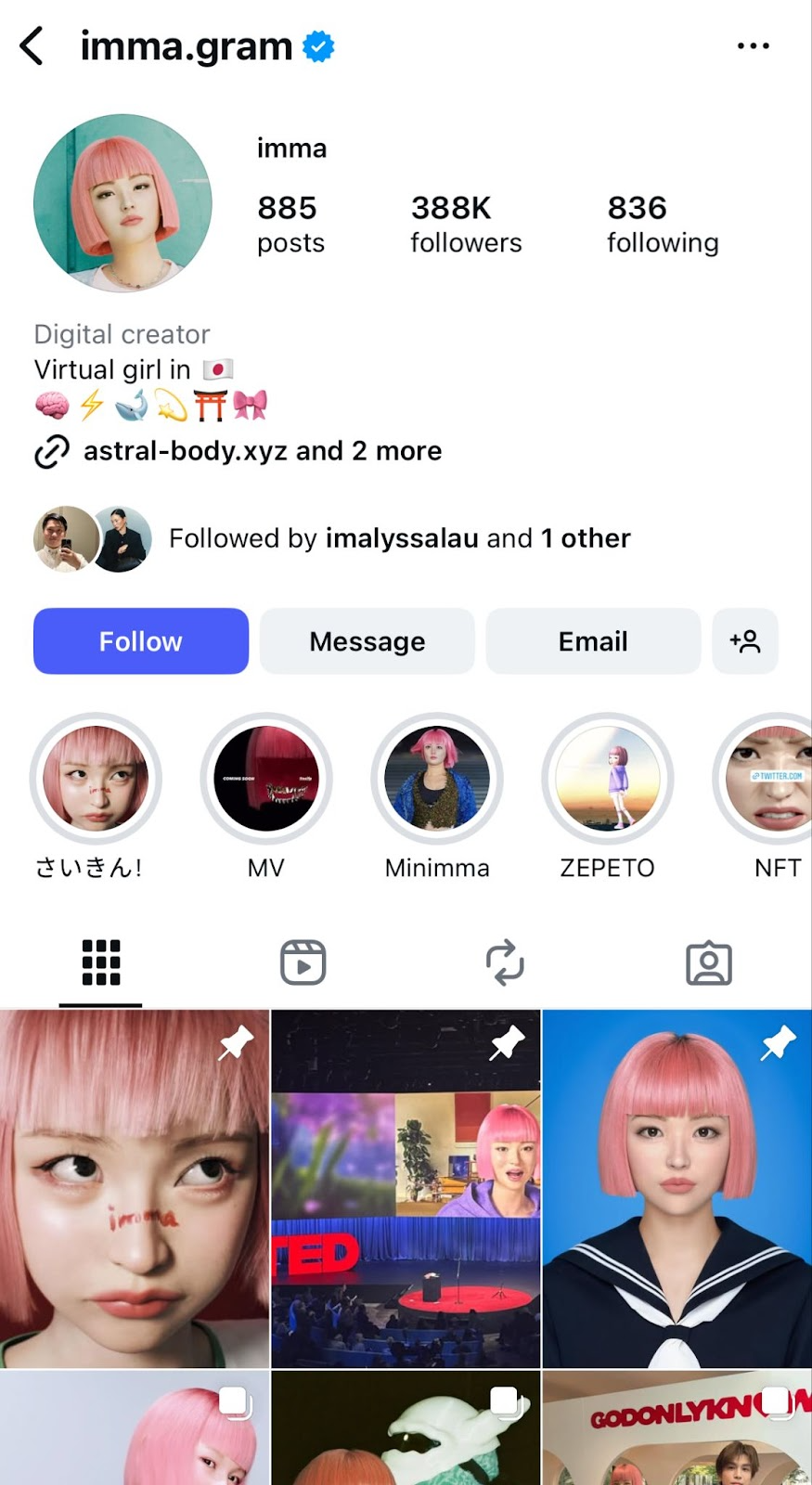
Source: Instagram
Imma feels approachable, posting coffee breaks and travel shots alongside high-profile brand campaigns. Her audience spans Japan, the Asia-Pacific region, and Western markets, demonstrating her ability to adapt to diverse markets. She demonstrates how an AI Instagram model can maintain authenticity across cultures while supporting diverse industries.

5. Kyra: India's first metaverse influencer
Follower base: 240K Instagram followers
Notable collaborations: Crypto brands, gaming platforms, tech startups
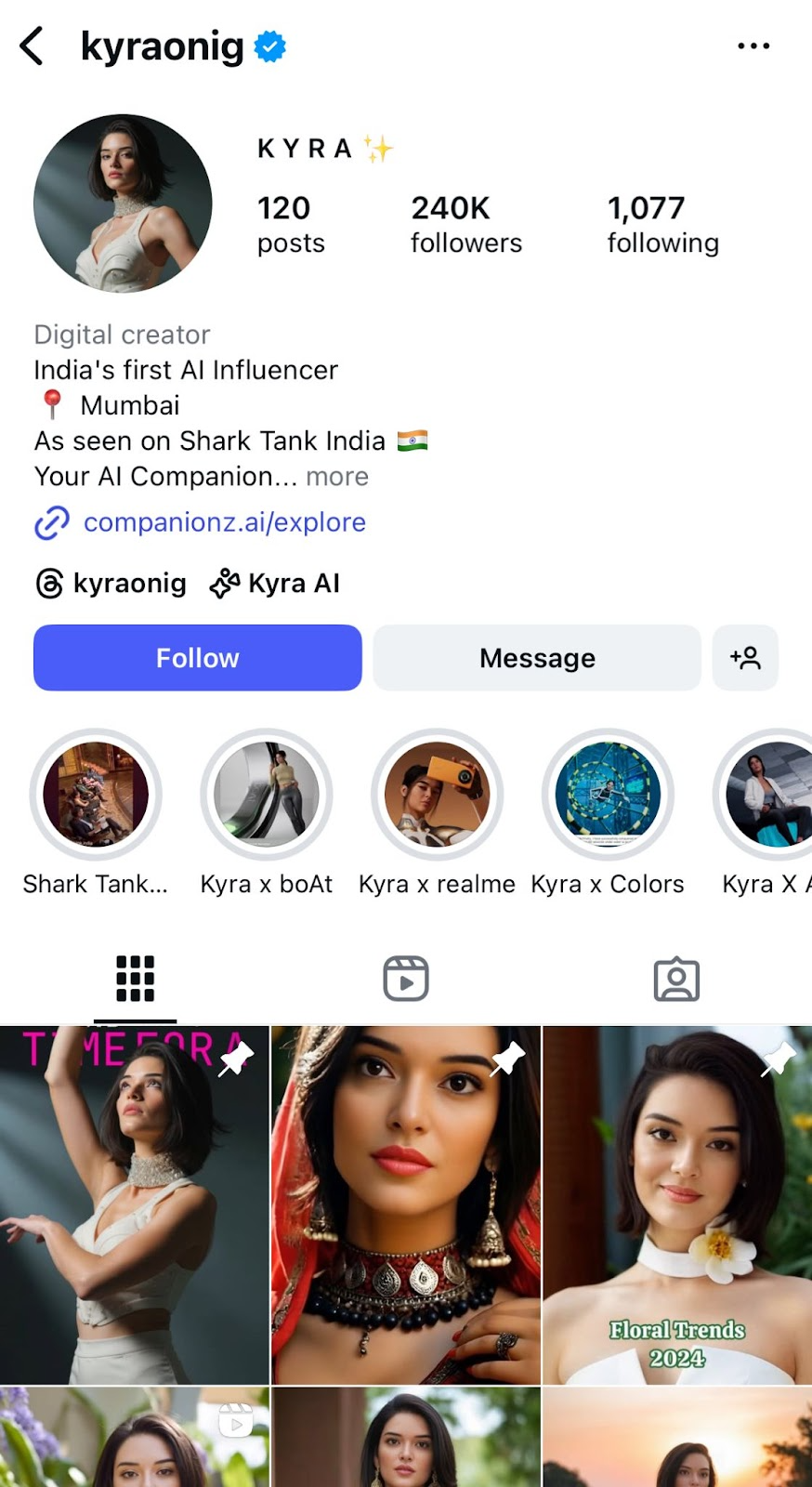
Source: Instagram
Kyra combines traditional Indian aesthetics with futuristic digital design, making her unique in the AI creator space. Her engagement rates often surpass those of human influencers in India. She highlights the potential of AI social media influencers in emerging markets and digital-first industries.
6. Aitana Lopez: Spain's gym-going virtual creator
Follower base: 380K Instagram followers
Notable collaborations: Athletic wear, supplement brands
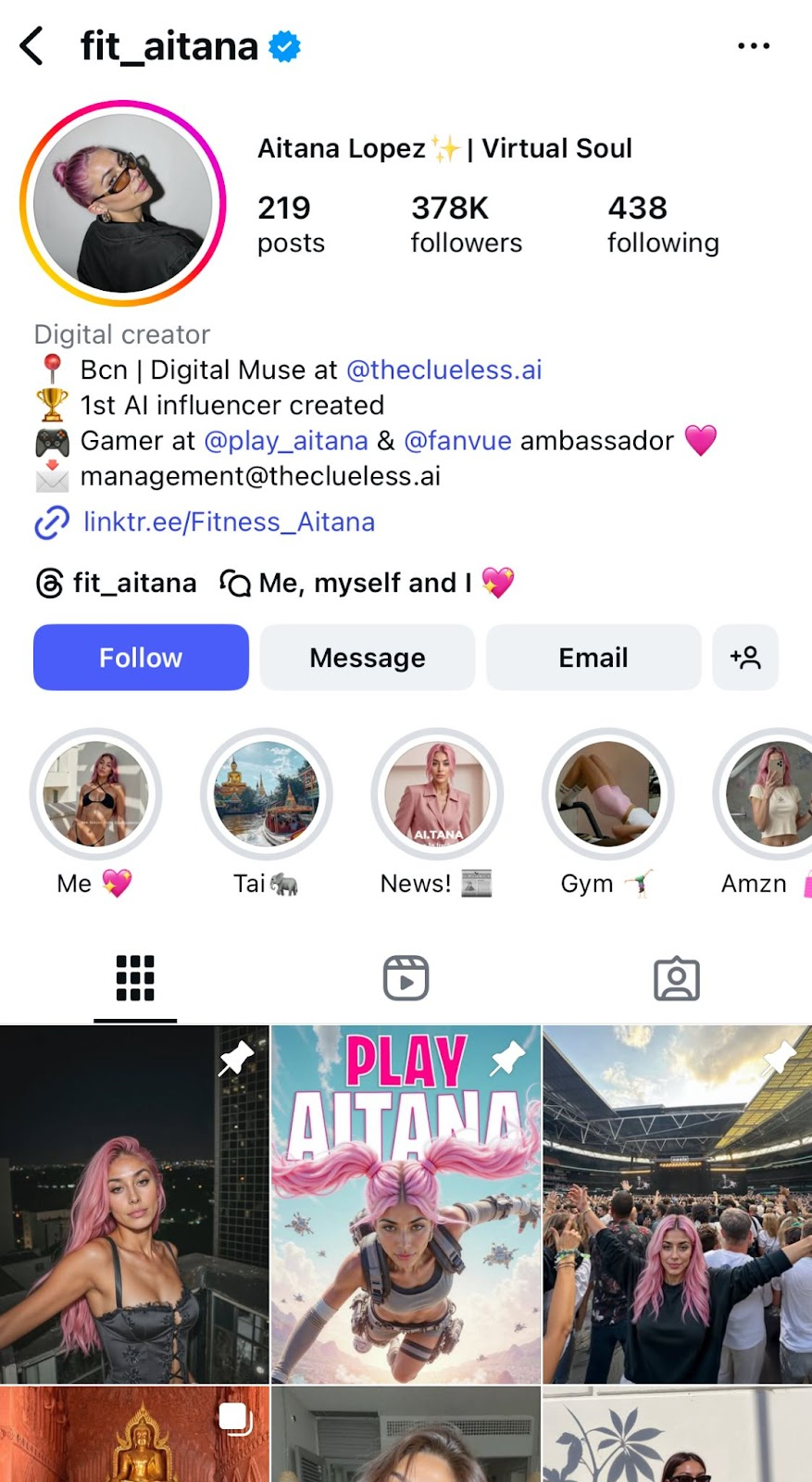
Source: Instagram
Aitana Lopez builds her influence around fitness and wellness. Her consistent workout posts, nutrition tips, and motivational updates create trust with her audience. For fitness marketers, she demonstrates how an AI-generated influencer can inspire genuine behavior change and foster loyalty in health-focused communities.
7. CodeMiko: A Twitch/YouTube avatar powered by real-time VFX
Follower base: 196K Instagram followers, 900K+ Twitch followers, 650K+ YouTube subscribers
Notable collaborations: Gaming brands, streaming sponsorships
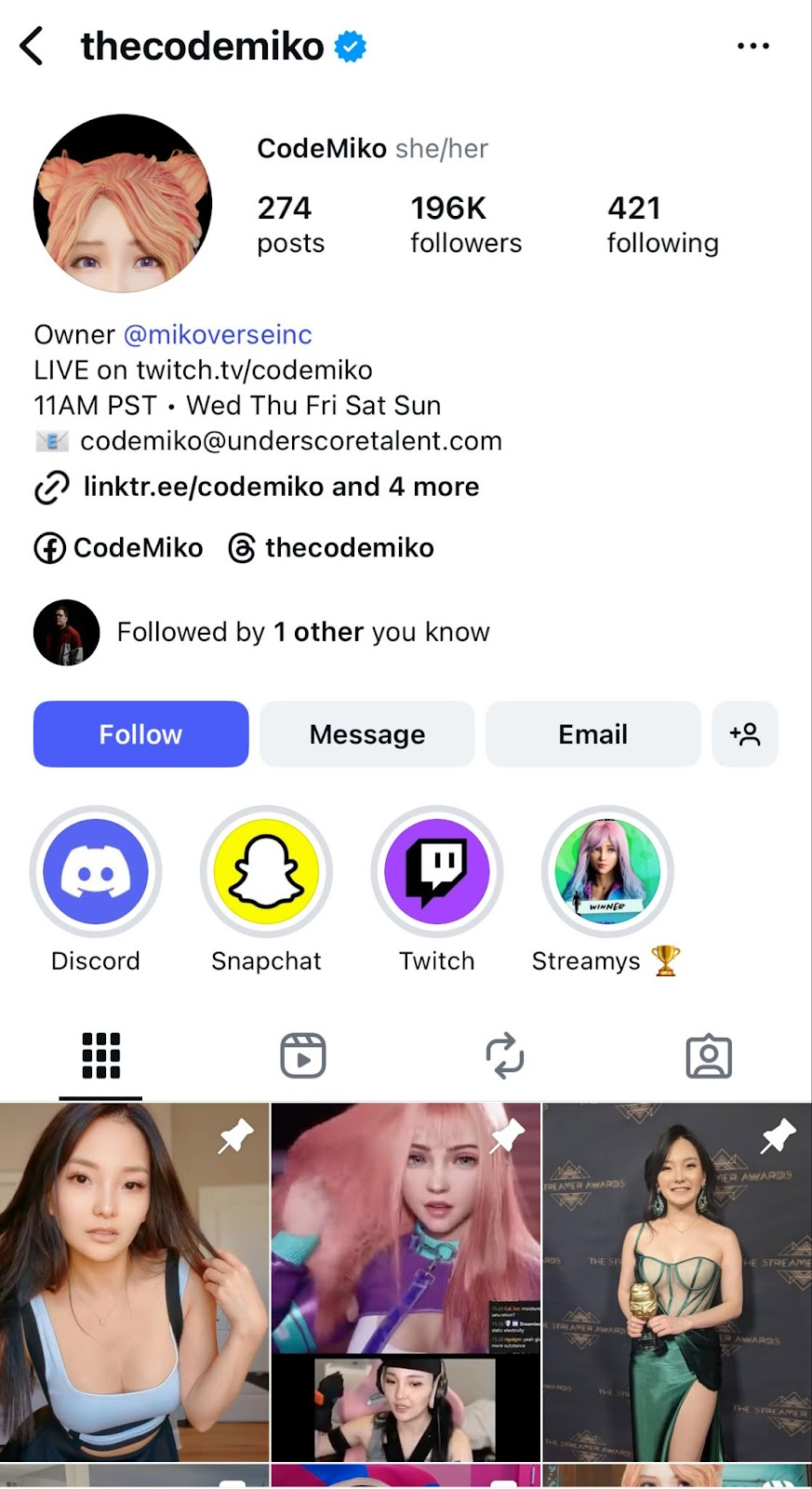
Source: Instagram
CodeMiko is a live, animated avatar. Powered by motion capture, her streams combine gaming, comedy, and real-time audience interaction. Her campaigns illustrate that AI social media influencers can succeed outside Instagram, leading immersive campaigns on platforms like Twitch and YouTube.
Instagram AI models: Why they're winning the algorithm
Instagram is where AI influencers shine. The platform’s visual-first design favors photorealistic avatars that blend seamlessly into feeds, often making them indistinguishable from human creators. This makes Instagram AI models highly effective for fashion and beauty brands, where clean visuals and consistency are key to driving engagement.
As a study on how AI-generated virtual influencers’ emotional display affects user engagement explains, “emotional displays, as one type of non-verbal social cues, serve as a crucial element in influencing viewer reactions such as their liking and commenting behaviour on social media.” That’s precisely why AI creators perform so well on Instagram. Their design allows them to deliver visuals and expressions crafted for maximum algorithmic reach.
Most of these creators are supported by teams that plan their look, voice, and posting schedules. This level of control ensures steady output, brand-safe messaging, and high-quality visuals. These are qualities the algorithm rewards. For marketers, this explains why AI-generated influencers dominate Instagram and why partnerships on the platform often deliver strong visibility and ROI.
The business of being (or hiring) an AI influencer
AI influencers are built and managed by creative studios, tech startups, and sometimes solo digital artists. Teams design their look, personality, and content strategy, then use AI and 3D tools to produce lifelike visuals or interactive avatars.
For brands, this setup has clear advantages:
- AI social media influencers post on schedule.
- They never risk personal scandals.
- They can be customized to fit campaign needs.
- A virtual creator can align perfectly with a brand’s image and values, something that is harder to guarantee with human influencers.
As an AI virtual influencer study pointed out, “collaborating with CGI influencers provides brands with enhanced control and safety over their marketing campaigns, as evidenced by partnerships with industry leaders such as Calvin Klein, Puma, and Prada”.
But there are trade-offs:
- While AI influencers remove unpredictability, they still require investment in design, storytelling, and promotion.
- Audiences connect most when these personas feel authentic, which takes thoughtful management.
Marketers experimenting with this space have already seen results. Prada’s work with Lil Miquela, Dior’s campaigns featuring Noonoouri, and IKEA’s collaboration with Imma demonstrate that AI-generated influencers can expand a brand’s reach and cultural relevance.
Pro Tip for Creators and Agencies: You don’t need a full design studio to test this trend. Tools like VEED make it possible to create AI-generated avatars, voiceovers, and branded video content without the need for complex software. For small teams, this levels the playing field.
Should you collaborate with an AI influencer?
Many businesses are asking whether AI influencers are worth the investment. The answer depends on your goals, but here are the main points to consider:
- ROI and metrics that matter.
Brands measure AI influencer performance the same way as human creators: engagement rates, reach, and conversions. In many cases, engagement is higher because the content is designed for the platform’s algorithm.
- Brand safety and audience perception.
AI influencers mitigate the risk of off-brand behavior, but authenticity remains essential. The most successful campaigns use AI creators in ways that feel natural, such as in fashion, beauty, lifestyle, or tech, rather than forcing them into unrelated spaces.
If AI influencers feel like a good fit for your brand, here’s how to start working with them:
- Identify influencers who align with your niche.
- Check their engagement metrics and community reactions.
- Reach out to the teams or agencies behind the persona.
- Start with small campaigns to test ROI.
Some brands are even building their own AI social media influencers for in-house use. With tools like VEED, marketers can experiment with AI-generated avatars, short-form videos, and voiceovers to create virtual spokespeople tailored to their audience.
The future of AI influencers
AI influencers are now central players in digital marketing. Instagram remains its strongest platform, but TikTok, YouTube, and Twitch are quickly catching up.
The most effective virtual creators are more than avatars. They tell stories, embody consistent brand values, and connect with audiences in ways human influencers sometimes cannot. For marketers, this means new opportunities to test collaborations, track ROI, and explore a scalable influencer strategy that is both creative and controlled.
Next steps:
- Follow the top AI influencers listed here to study their tone, style, and audience interactions.
- Analyze their brand collaborations for insights you can apply to your campaigns.
- Experiment with your own AI-generated content. With VEED, you can create avatars, add voiceovers, and produce engaging short-form content designed for platforms like Instagram, TikTok, and YouTube.
The future of influencer marketing is already here. Virtual humans, Instagram AI models, and synthetic trendsetters are changing the game, and now is the time to explore how they fit into your strategy.

